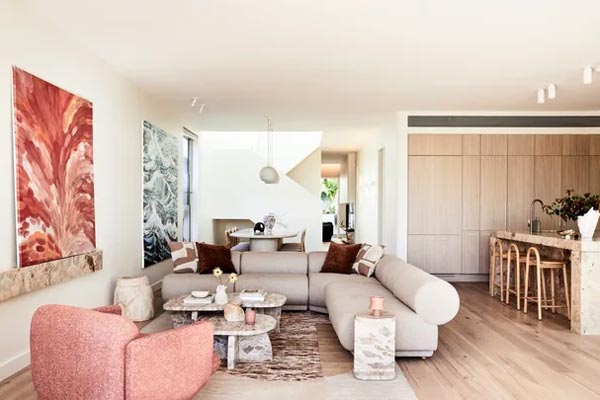A well-chosen rug can completely transform a space, adding warmth, texture, and personality. Whether you want to create a cozy atmosphere in your living room, add a touch of luxury to your bedroom, or protect high-traffic areas like hallways, choosing the right rug is key. But with so many options available in terms of size, material, color, and style, it can be overwhelming.
In this guide, we’ll walk you through the essential factors to consider when selecting the perfect rug for every room in your home.

Understanding Rug Materials
The material of a rug plays a crucial role in its durability, comfort, and maintenance. Here are some popular options:
Wool
- Soft and warm, wool rugs are durable and naturally stain-resistant.
- Ideal for: Living rooms and bedrooms.
Cotton
- Lightweight and easy to clean, cotton rugs are great for casual spaces.
- Ideal for: Kitchens and kids’ rooms.
Jute & Sisal
- Natural fiber rugs offer an organic feel and are eco-friendly.
- Ideal for: Entryways and dining rooms.
Silk & Viscose
- Luxurious and soft but delicate and harder to clean.
- Ideal for: Low-traffic areas like bedrooms.
Synthetic (Polyester, Nylon, Polypropylene)
- Affordable, stain-resistant, and great for high-traffic areas.
- Ideal for: Hallways, outdoor spaces, and playrooms.
Choosing the Right Rug Size
Picking the right rug size ensures it complements the space rather than overpowering it.
Living Room
- A large rug should fit under all key furniture pieces or at least extend beneath the front legs of sofas and chairs.
- Standard sizes: 8′ x 10′, 9′ x 12′.
Bedroom
- Ideally, a rug should extend 18-24 inches beyond the sides of the bed.
- Standard sizes: 6′ x 9′ for a queen bed, 8′ x 10′ for a king bed.
Dining Room
- The rug should be large enough to accommodate chairs when pulled out.
- Standard sizes: 8′ x 10′ or 9′ x 12′.
Kitchen
- Runners work well in galley kitchens, while small area rugs can be placed in front of sinks.
- Standard sizes: 2′ x 3′ for small spaces, 2.5′ x 8′ for runners.
Hallways & Entryways
- Runners help define the space and add warmth.
- Standard sizes: 2′ x 6′ or 2′ x 10′.
Matching the Rug Style to Your Decor
Your rug should complement your existing décor and color scheme.
Modern & Minimalist Homes
- Opt for solid colors or geometric patterns.
- Neutral tones like gray, beige, and black work well.
Traditional & Classic Interiors
- Persian or Oriental rugs add sophistication.
- Rich colors like burgundy, navy, and gold enhance elegance.
Bohemian & Eclectic Spaces
- Look for colorful, patterned rugs with a vintage feel.
- Moroccan and kilim rugs are great choices.
Coastal & Farmhouse Styles
- Natural fiber rugs like jute or sisal fit well.
- Soft blues, whites, and beiges enhance a coastal vibe.
Considering Maintenance & Cleaning
Some rugs require more upkeep than others. Here’s what to keep in mind:
- Wool rugs: Vacuum regularly and spot-clean spills.
- Cotton rugs: Machine washable but may wear out faster.
- Jute & sisal rugs: Shake out dirt, but avoid liquid stains.
- Synthetic rugs: Easy to clean and stain-resistant.
If you have pets or kids, look for rugs labeled stain-resistant and washable.
Budget Considerations
Rugs come in all price ranges. Here’s a general pricing guide:
- Budget-friendly: $50 – $300 (Synthetic, cotton, or small-sized rugs).
- Mid-range: $300 – $1,000 (Wool or high-quality synthetic rugs).
- Luxury: $1,000+ (Handmade, silk, or large high-end wool rugs).
Remember, investing in a high-quality rug can save you money in the long run since it will last longer.
Final Tips for Choosing the Perfect Rug
- Use rug pads – They prevent slipping and add extra cushioning.
- Layer rugs – A smaller statement rug over a larger neutral one adds depth.
- Test before you buy – Order fabric swatches if available.
- Consider seasonal changes – Swap heavier rugs for lighter ones in warmer months.
By following these tips, you’ll find the perfect rug to enhance the beauty and functionality of every room in your home. Do you have a favorite rug style? Let me know in the comments!
